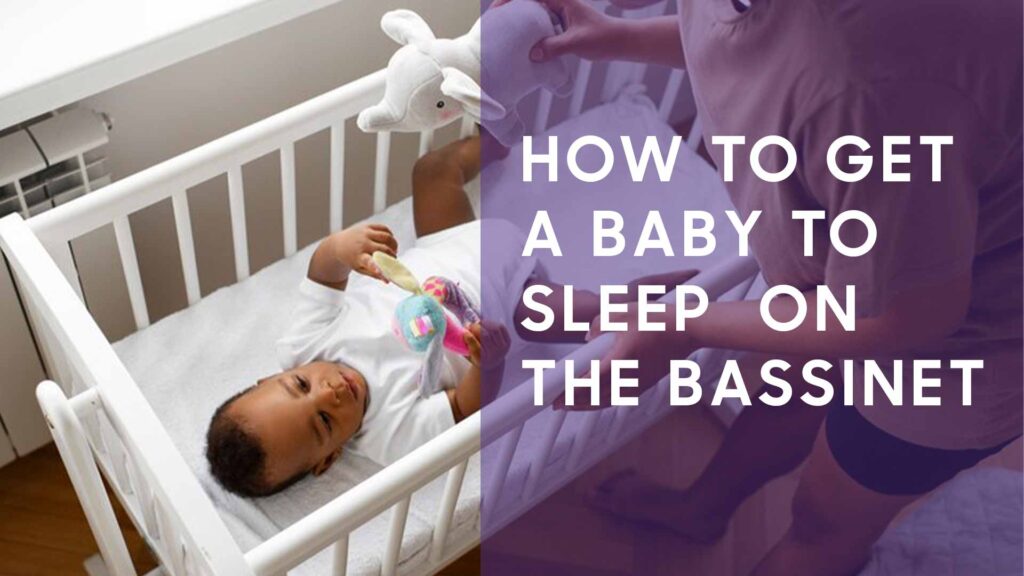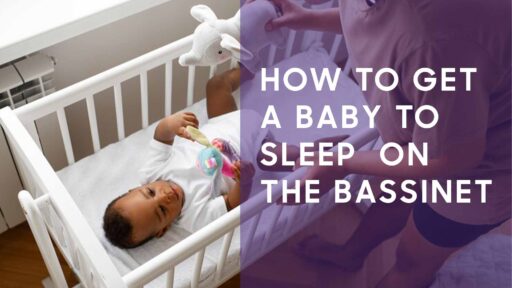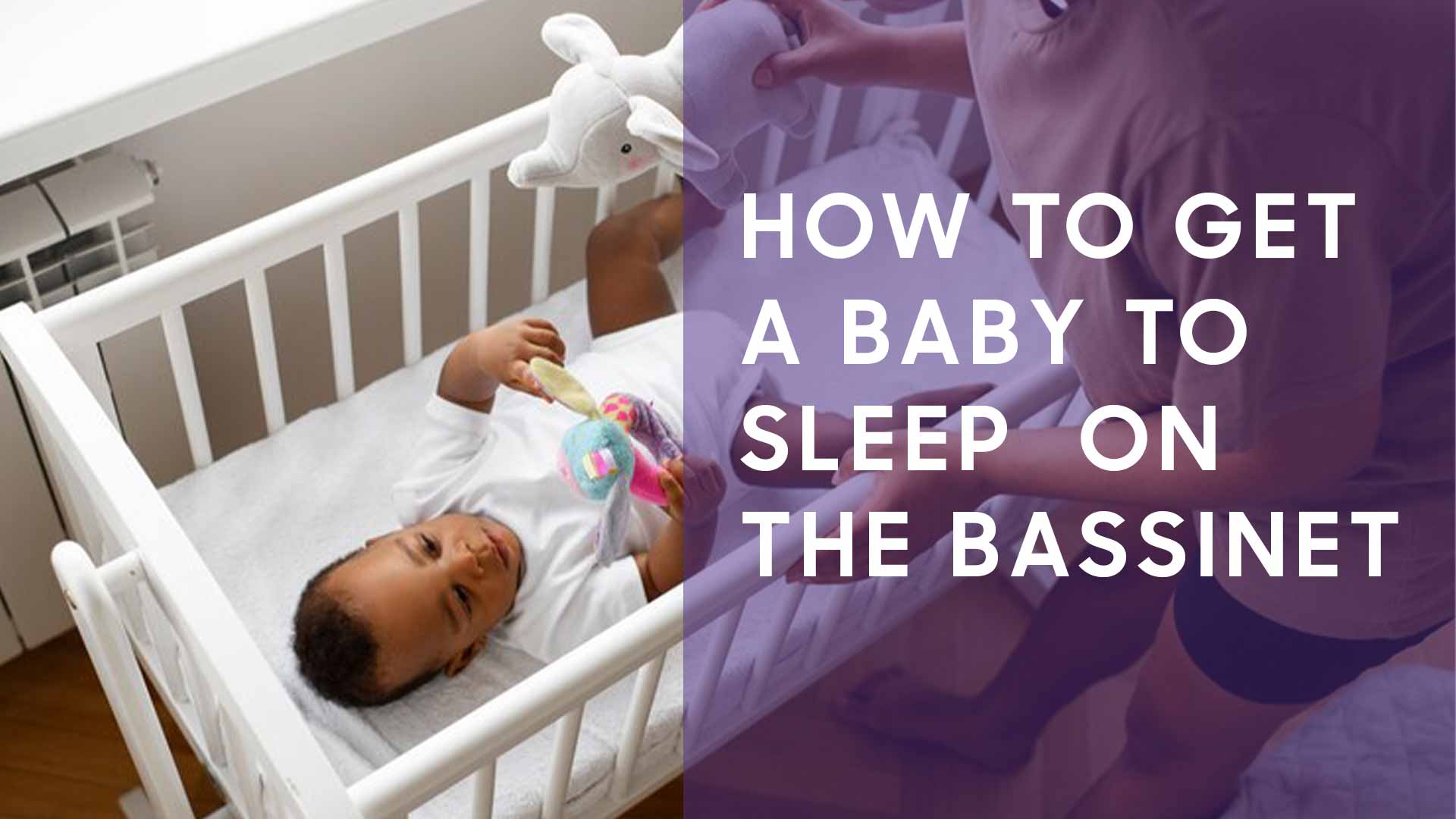Babies who are newborns sleep for long stretches of time. Therefore, it can be really annoying when they refuse to sleep in a bassinet. As a new mother, you may initially enjoy cuddling your baby, but soon you’ll long for some time to yourself so that you may attend to other aspects of your life! Previously we’ve discussed “How To Put A Baby To Sleep In 40 Seconds”. You can look over this article for exclusive tips. Here, I’ll go over the importance of getting your baby to sleep in a bassinet, the reasons why it might not be happening for them, and solutions for the situation.

Why it’s crucial that your infant sleep in a bassinet security
Since bassinets are made with safety in mind to reduce the danger of sudden infant death syndrome (SIDS), they are the safest location for your newborn to sleep. It is advised by the American Academy of Paediatrics (AAP) that infants sleep on their backs on a firm mattress free of soft things such as blankets, pillows, bumper pads, and pillows.
In order to guarantee your baby sleeps safely and peacefully, bassinets frequently have flat, firm mattresses that meet safety regulations along with permeable sides. The danger of SIDS, unintentional asphyxia, and other injuries is decreased when your baby sleeps in a secure area, such as a bassinet.
Gradually move to the cot
Bassinets are great for the first few months of life, but they additionally aid in the changeover to a cot. Using a bassinet to begin with helps your newborn get used to sleeping in their own area. When they get bigger and more self-sufficient, you can gradually move them onto a cot.
When your newborn baby will only fall asleep in your arms, it can be incredibly annoying and draining. As much as you enjoy spending time with your precious baby, you also need time away!
Here are some practical suggestions to help you get your child used to sleeping in a bassinet-
If your newborn refuses to go to sleep in their bassinet, you’re not alone; many parents also have trouble getting their infant to doze off on their own.
Your baby might not want to sleep in a bassinet for the following reasons, to name a few:
1. They don’t feel at ease. For some newborns, the main reason they don’t want to sleep in a bassinet is discomfort. As it happens, not every bassinet is made equally. Some may appear lovely from the outside, but they don’t provide newborns with much comfort or support when they sleep on them.
2. Try to verify the mattress that comes with your bassinet and be sure to compare your baby’s height and weight to the bassinet’s suggested sizes. It could be time to adjust your baby’s sleeping space if they are larger.
3. Your infant can be fussy. Imagine being told to lie flat on your back and not move while experiencing the worst gas attack of your life.
They are gassy babies, but bottle-fed babies, babies with physical nursing difficulties, and newborns with latch problems may be more likely to swallow air and produce gas. Your baby might need to pass extra gas if they appear uncomfortable, cry a lot in particular positions, or scrunch their legs up a lot. Before laying them down, try burping them or keeping them upright for a few minutes to allow their tummies to settle.
4. Your infant is experiencing reflux. Once more, babies have varying degrees of reflux. While some newborns may only have reflux once in a while, others may experience more severe reflux that causes them to spit up all the time and in discomfort.
If you suspect reflux in your infant, you should always consult with your baby’s paediatrician. (Premature babies may have an increased risk of reflux.) See your baby’s doctor about reflux remedies if your child is spitting up a lot, is not gaining weight, or appears distressed during or right after feedings.
5. Your infant is too exhausted. Unbelievably, a baby who is too exhausted to sleep may not go to sleep. Like toddlers and even adults, newborns can experience exhaustion coupled with overstimulation, making it difficult for them to fall asleep. Turn off bright lights and noises, take away any screens, and turn on white noise sources like fans or noise machines to try to soothe an overtired baby.
6. Your infant is being woken up by their startle response. The startle reflex may be triggered by the simple act of placing your infant in a bassinet.
According to theory, the startle reflex is a vestige of a prehistoric era in which infants would have had to cling to their mothers, in a manner similar to how baby monkeys follow the mother through the trees all day.
7. Remain persistent. It might take some time for your baby to “accept” a bassinet, much like the fussy feeding you’ll undoubtedly have to cope with during the toddler years. This implies that even if your baby wakes up and refuses to sleep in the bassinet right away, you shouldn’t give up on them.
- Try, try again if at first you don’t succeed.
- Maintain uniformity with the bassinet.
Additionally, it’s critical to maintain your baby’s regular sleep schedule. To help them link their bassinet with sleep, make sure you put them to sleep in it both at night and during naps.
8. Always try to check the weight limits on your bassinet. A cute bassinet that could not hold the maximum weight of your baby’s. It was also utterly rejected by your child when it came time to go to sleep.
She could have resisted for weeks when you attempted to persuade her to sleep in it,so you needed to check out and move her to her cot, where she slept soundly for the first time.
It turns out that she is not comfortable because the tiny mattress in the bassinet was supported by a weak cardboard piece. Although every infant is unique, make sure to check the recommendations.
9. Attempt swaddling. Swaddling is a truly amazing method for lulling newborns to sleep in a bassinet. It’s worth attempting to master the infant swaddle, so if you haven’t already, find a tutorial online or just ask a nurse you know.
Just placing a newborn in a bassinet might cause some babies to develop a severe startle reflex. Swaddling aids in simulating the warm surroundings of the woman.
Moreover, these articles may be beneficial for you. You can read the following articles.
The Key Differences Between Baby Stroller vs Pram
Conclusion
Most of the families use bassinet for a short period of time, like 3 months to 6 months. So you can resell your bassinet. It assembles great options for sleeping babies with their comfort zone.







